- Clone
- NAT105 (See other available formats)
- Regulatory Status
- RUO
- Other Names
- PD1, PDCD1
- Isotype
- Mouse IgG1, κ
- Ave. Rating
- Submit a Review
- Product Citations
- publications

-

Multiplexed IHC staining of PE anti-CD279 (clone NAT105) on formalin-fixed paraffin-embedded human tonsil tissue, validated for use on the Cellscape™. The tissue was incubated with PE anti-Human CD279 (clone NAT105, red) and Alexa Fluor® 488 anti-CD3 (green) for one hour at room temperature. Nuclei were counterstained with Hoechst 33342. Images were captured with a 20X objective. Scale bar: 50 µm -

Human peripheral blood lymphocytes were stained with CD3 FITC and CD279 (clone NAT105) PE. -

PHA-stimulated (three days) human PBMC were stained with CD279 (clone NAT105) PE (filled histogram) or mouse IgG1, κ PE isotype control (open histogram).
| Cat # | Size | Price | Quantity Check Availability | Save | ||
|---|---|---|---|---|---|---|
| 367403 | 25 tests | $134 | ||||
| 367404 | 100 tests | $273 | ||||
Programmed cell death 1 (PD-1), also known as CD279, is a 55 kD member of the immunoglobulin superfamily. CD279 contains the immunoreceptor tyrosine-based inhibitory motif (ITIM) in the cytoplasmic region and plays a key role in peripheral tolerance and autoimmune diseases. CD279 is expressed predominantly on activated T cells, B cells, and myeloid cells. PD-L1 (B7-H1, CD274) and PD-L2 (B7-DC, CD273) are ligands of CD279 (PD-1) and are members of the B7 gene family. Evidence suggests overlapping functions for these two PD-1 ligands and their constitutive expression on some normal tissues and upregulation on activated antigen-presenting cells. The interaction with CD279 ligands results in inhibition of T cell proliferation and cytokine secretion.
Product DetailsProduct Details
- Verified Reactivity
- Human
- Antibody Type
- Monoclonal
- Host Species
- Mouse
- Immunogen
- YT cell line.
- Formulation
- Phosphate-buffered solution, pH 7.2, containing 0.09% sodium azide and BSA (origin USA)
- Preparation
- The antibody was purified by affinity chromatography and conjugated with PE under optimal conditions.
- Concentration
- Lot-specific (to obtain lot-specific concentration and expiration, please enter the lot number in our Certificate of Analysis online tool.)
- Storage & Handling
- The antibody solution should be stored undiluted between 2°C and 8°C, and protected from prolonged exposure to light. Do not freeze.
- Application
-
FC - Quality tested
SB - Community Verified - Recommended Usage
-
Each lot of this antibody is quality control tested by immunofluorescent staining with flow cytometric analysis. For flow cytometric staining, the suggested use of this reagent is 5 µl per million cells in 100 µl staining volume or 5 µl per 100 µl of whole blood.
- Excitation Laser
-
Blue Laser (488 nm)
Green Laser (532 nm)/Yellow-Green Laser (561 nm)
- Application Notes
-
Additional reported applications (for the relevant formats of this clone) include: immunofluorescence staining.
We recommend using our Ultra Streptavidin (USA) HRP Detection Kit (Multi-Species, DAB) (Cat. No. 929501). - Additional Product Notes
-
For the use of this antibody in spatial biology (SB), we have partnered with Bruker Spatial Biology Biosciences for demonstration of this antibody on their next-generation ChipCytometry instrument called the CellScape™. The CellScape platform is an end-to-end solution for highly multiplexed spatial omics. Combining an advanced, purpose-built imaging system with easy-to-use fluidics for walk-away automation, the CellScape system will accelerate your exploration into the rapidly evolving field of spatial biology. More information on the the Bruker Spatial Biology CellScape and a complete list of our antibodies that have been demonstrated on the instrument can be found here.
-
Application References
(PubMed link indicates BioLegend citation) -
- Roncador G, et al. 2007. Haematologica 92:1059.
- Nam-Cha SH, et al. 2008. Am. J. Surg. Pathol. 32:1252.
- Rodriguez-Pinilla SM, et al. 2009. Am. J. Surg. Pathol. 33:81.
- Product Citations
-
- RRID
-
AB_2566064 (BioLegend Cat. No. 367403)
AB_2566065 (BioLegend Cat. No. 367404)
Antigen Details
- Structure
- 55 kD type I transmembrane protein.
- Distribution
-
Transiently expressed on CD4- and CD8- thymocytes, upregulated in thymocytes and splenic T and B lymphocytes, and is expressed on activated myeloid cells.
- Function
- Signaling, co-stimulation (co-inhibition), immunoglobulin superfamily.
- Interaction
- SHP-1 and SHP-2.
- Ligand/Receptor
- PD-L1 (CD274) and PD-L2 (CD273).
- Cell Type
- B cells, T cells, Thymocytes, Tregs
- Biology Area
- Cancer Biomarkers, Immunology, Inhibitory Molecules
- Molecular Family
- CD Molecules, Immune Checkpoint Receptors
- Antigen References
-
1. Francisco LM, Sage PT, and Sharpe AH. 2010. Immunological Rev. 236:219.
- Gene ID
- 5133 View all products for this Gene ID
- UniProt
- View information about CD279 on UniProt.org
Related FAQs
- What type of PE do you use in your conjugates?
- We use R-PE in our conjugates.
- If an antibody clone has been previously successfully used in IBEX in one fluorescent format, will other antibody formats work as well?
-
It’s likely that other fluorophore conjugates to the same antibody clone will also be compatible with IBEX using the same sample fixation procedure. Ultimately a directly conjugated antibody’s utility in fluorescent imaging and IBEX may be specific to the sample and microscope being used in the experiment. Some antibody clone conjugates may perform better than others due to performance differences in non-specific binding, fluorophore brightness, and other biochemical properties unique to that conjugate.
- Will antibodies my lab is already using for fluorescent or chromogenic IHC work in IBEX?
-
Fundamentally, IBEX as a technique that works much in the same way as single antibody panels or single marker IF/IHC. If you’re already successfully using an antibody clone on a sample of interest, it is likely that clone will have utility in IBEX. It is expected some optimization and testing of different antibody fluorophore conjugates will be required to find a suitable format; however, legacy microscopy techniques like chromogenic IHC on fixed or frozen tissue is an excellent place to start looking for useful antibodies.
- Are other fluorophores compatible with IBEX?
-
Over 18 fluorescent formats have been screened for use in IBEX, however, it is likely that other fluorophores are able to be rapidly bleached in IBEX. If a fluorophore format is already suitable for your imaging platform it can be tested for compatibility in IBEX.
- The same antibody works in one tissue type but not another. What is happening?
-
Differences in tissue properties may impact both the ability of an antibody to bind its target specifically and impact the ability of a specific fluorophore conjugate to overcome the background fluorescent signal in a given tissue. Secondary stains, as well as testing multiple fluorescent conjugates of the same clone, may help to troubleshoot challenging targets or tissues. Using a reference control tissue may also give confidence in the specificity of your staining.
- How can I be sure the staining I’m seeing in my tissue is real?
-
In general, best practices for validating an antibody in traditional chromogenic or fluorescent IHC are applicable to IBEX. Please reference the Nature Methods review on antibody based multiplexed imaging for resources on validating antibodies for IBEX.
Other Formats
View All CD279 Reagents Request Custom ConjugationCustomers Also Purchased
Compare Data Across All Formats
This data display is provided for general comparisons between formats.
Your actual data may vary due to variations in samples, target cells, instruments and their settings, staining conditions, and other factors.
If you need assistance with selecting the best format contact our expert technical support team.
-
Purified anti-human CD279 (PD-1)
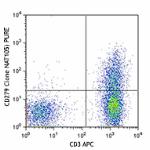
Human peripheral blood lymphocytes were stained with purifie... 
Tissue imaged here is the lymphoid nodule/germinal center of... 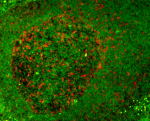
Human paraffin-embedded tonsil tissue slices were prepared w... 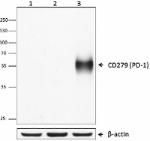
Western blot analysis of Jurkat (lane 1), PBMC untreated (la... 
PHA-stimulated (three days) human PBMC were stained with pur... -
PE anti-human CD279 (PD-1)

Human peripheral blood lymphocytes were stained with CD3 FIT... 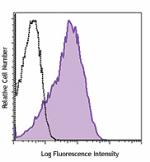
PHA-stimulated (three days) human PBMC were stained with CD2... 
Multiplexed IHC staining of PE anti-CD279 (clone NAT105) on ... -
APC anti-human CD279 (PD-1)
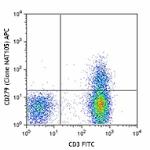
Human peripheral blood lymphocytes were stained with CD3 FIT... 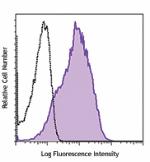
PHA-stimulated (three days) human PBMC were stained with CD2... -
Alexa Fluor® 488 anti-human CD279 (PD-1)
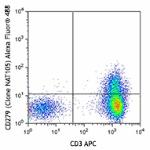
Human peripheral blood lymphocytes were stained with CD3 APC... 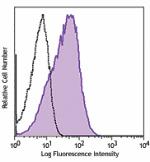
PHA-stimulated (3-day) human peripheral blood lymphocytes we... -
PerCP/Cyanine5.5 anti-human CD279 (PD-1)
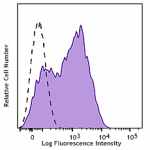
PHA-stimulated (3-day) human peripheral blood mononuclear ce... 
Human peripheral blood lymphocytes were stained with CD3 APC... -
PE/Cyanine7 anti-human CD279 (PD-1)
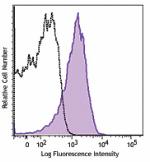
PHA-stimulated (3-day) human peripheral blood lymphocytes we... -
FITC anti-human CD279 (PD-1)

PHA-stimulated (3-day) human peripheral blood lymphocytes we... -
APC/Cyanine7 anti-human CD279 (PD-1)
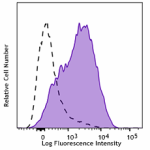
PHA-stimulated (3-day) human peripheral blood lymphocytes we... -
Alexa Fluor® 647 anti-human CD279 (PD-1)
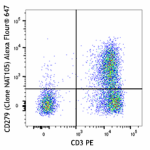
Human peripheral blood lymphocytes were stained with CD3 PE ... 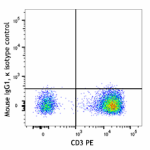
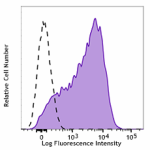
PHA-stimulated (3-day) human peripheral blood lymphocytes we... -
Biotin anti-human CD279 (PD-1)
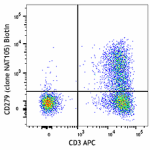
Human peripheral blood lymphocytes were stained with CD3 APC... 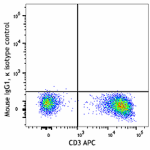
-
Brilliant Violet 510™ anti-human CD279 (PD-1)
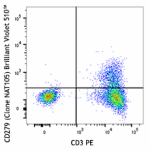
Human peripheral blood lymphocytes were stained with CD3 PE ... 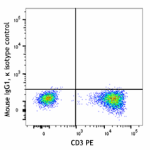
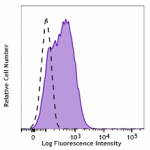
PHA-stimulated (3-day) human peripheral blood lymphocytes we... -
Brilliant Violet 421™ anti-human CD279 (PD-1)

Human peripheral blood lymphocytes were stained with CD3 PE ... 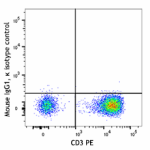
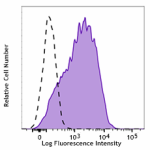
PHA-stimulated (3-day) human peripheral blood lymphocytes we... -
Brilliant Violet 711™ anti-human CD279 (PD-1)
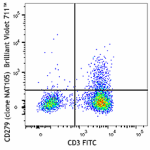
Human peripheral blood lymphocytes were stained with CD3 FIT... 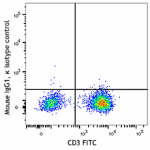
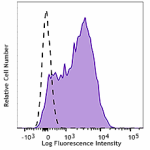
PHA-stimulated (3-day) human peripheral blood lymphocytes we... -
Brilliant Violet 785™ anti-human CD279 (PD-1)
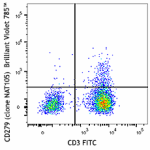
Human peripheral blood lymphocytes were stained with CD3 FIT... 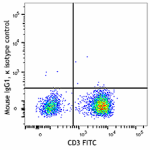
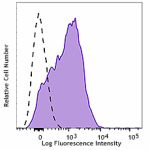
PHA-stimulated (3-day) human peripheral blood lymphocytes we... -
Brilliant Violet 605™ anti-human CD279 (PD-1)
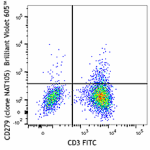
Human peripheral blood lymphocytes were stained with CD3 FIT... 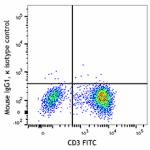
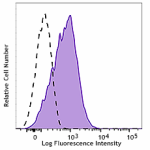
PHA-stimulated (3-day) human peripheral blood lymphocytes we... -
Brilliant Violet 650™ anti-human CD279 (PD-1)

Human peripheral blood lymphocytes were stained with CD3 FIT... 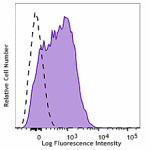
PHA-stimulated (3-day) human peripheral blood lymphocytes we... -
PE/Dazzle™ 594 anti-human CD279 (PD-1)

Human peripheral blood lymphocytes were stained with CD3 APC... -
TotalSeq™-Bn1303 anti-human CD279 (PD-1)
-
PE anti-human CD279

Typical results from PHA-stimulated human peripheral blood l... -
Spark Red™ 718 anti-human CD279 (PD-1) (Flexi-Fluor™)
-
APC anti-human CD279

Typical results from PHA-stimulated human peripheral blood l...
 Login/Register
Login/Register 
















Follow Us